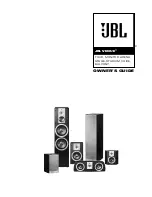
OPERATION
2-16
November 2001
Part No. 001-7240-001
Scan Continue Timer
The scan continue timer controls the maximum
time that a call is received before scanning resumes.
This prevents scanning from being delayed for long
periods by lengthy calls. This time can be programmed
for 0-60 seconds in 1-second steps. If “0” is
programmed, there is no time limit and the entire
message is always received. If the SCN CONT menu
parameter is available (see Section 2.5.2), this feature
can be turned on and off by the user.
2.6.10 TRANSMITTING IN THE SCAN MODE
When messages are received while scanning, the
programming of the “Scan Revert Mode” parameter
determines if the selected system/group does not
change or changes permanently or temporarily to the
new system/group. This in turn affects the system/
group on which responses occur. The display always
indicates the system/group on which a call is being
received, but this may not be the system/group on
which a response occurs (see mode descriptions which
follow).
When an LTR-Net/LTR priority call is received
(see Section 2.8.2), the scan revert mode programming
also determines if the selected group changes and if a
response occurs on the displayed or selected group,
even if scanning is disabled. The three programmable
scan revert mode configurations operate as follows:
Last Selected - Transmissions always occur on the
system/group that was selected manually by the SYS
and GRP keys or automatically by roaming. Therefore,
if a message is received when scanning that is not on
the selected system/group, a response occurs on the
selected system/group, not the system/group of the
call. To respond to this type of call, select the system/
group of the call as follows:
•
Select it manually using the SYS and GRP keys.
•
Before scanning resumes, exit the scan mode by
pressing FCN SCAN. The system/group of the call
then becomes the selected system/group and it is not
necessary to change it manually.
Last Received - The selected system/group changes to
the system/group of a call. Therefore, you can always
respond to a call without having to manually change
the system/group. To return to the previously selected
system/group, it must be manually selected using the
SYS and GRP keys or FCN HOME if it was the home
system/group.
Temporary Last Received - The system/group
changes to the system/group of a call for only the
duration of the receive delay period described in
Section 2.6.9. Then when the delay expires and scan-
ning resumes (if it is not disabled), transmissions
occur on the selected system/group. Therefore, you
can respond to a call without changing the selected
system/group as long as you do so before scanning
resumes.
2.7 DIAL MODE
2.7.1 INTRODUCTION
When placing calls that require dialing a number
(telephone and auxiliary), using the dial mode
provides the following features which make placing
these calls more convenient:
•
The eight-character alphanumeric display is cleared
so that the dialed number can be displayed.
•
Numbers can be entered at any convenient rate,
dialing errors corrected, and then the number auto-
matically transmitted when desired.
•
Up to ten 16-digit numbers can be stored in memory
and later recalled.
•
System and group scan are disabled. Therefore, calls
are received on only the selected system/group and
also on any higher priority groups if applicable.
•
The SYS and GRP keys become RCL (Recall) and
CLR (Clear) keys. Therefore, the selected system
and group cannot be changed with the dial mode
selected.
Telephone and Auxiliary calls can also be placed
without selecting the dial mode. However, the dialed
number does not appear in the display and therefore
cannot be stored or recalled. A number is manually
transmitted as follows:
















































